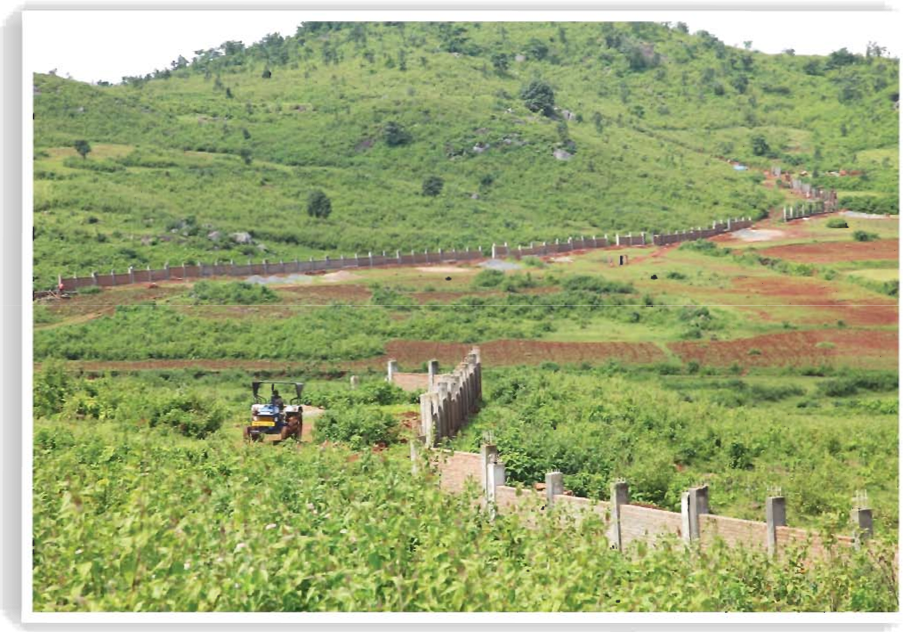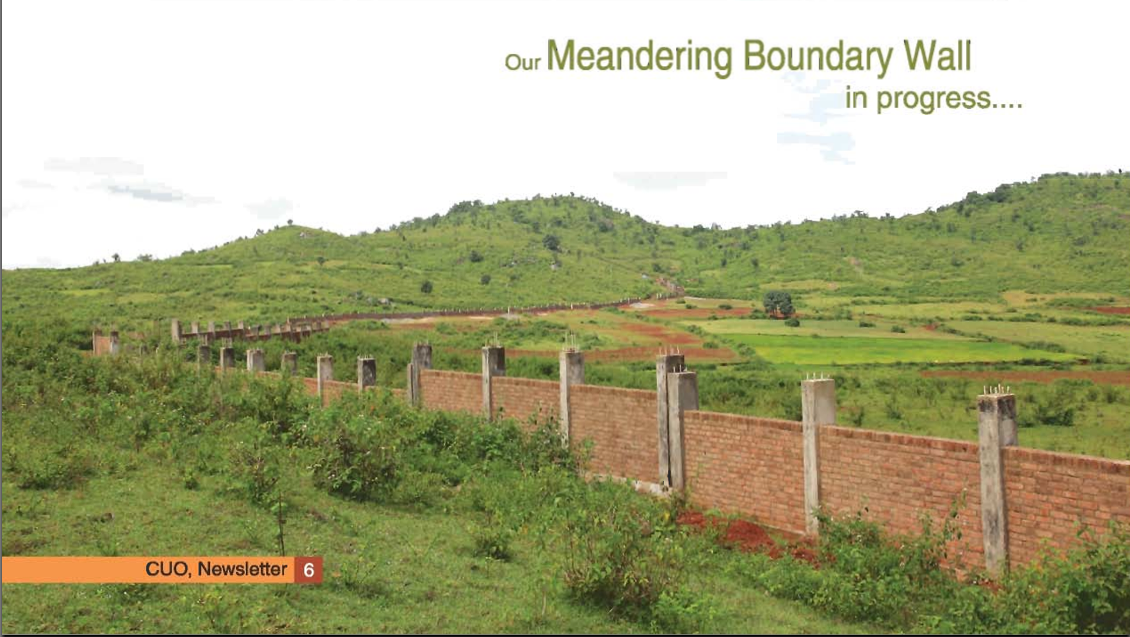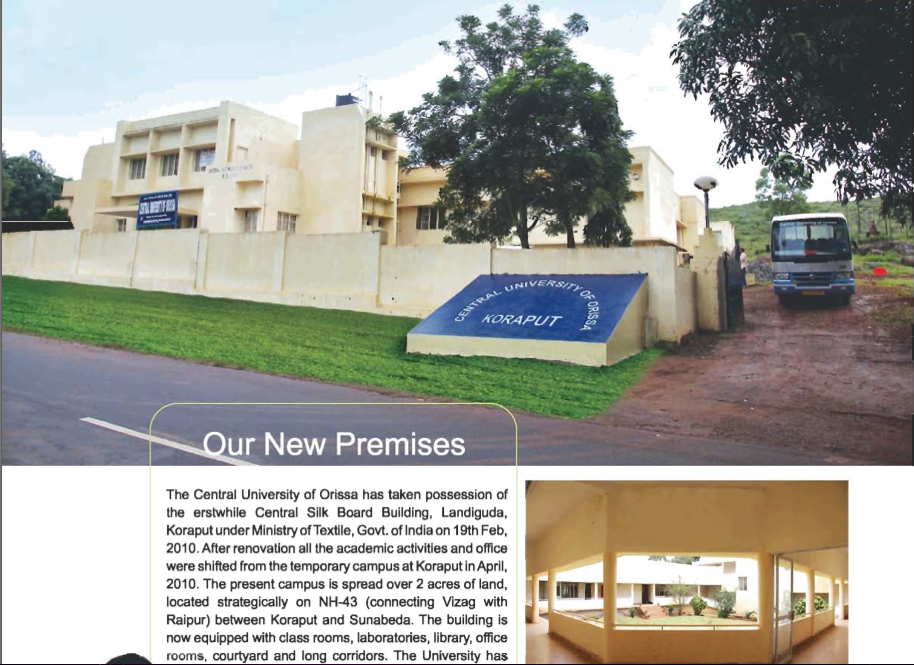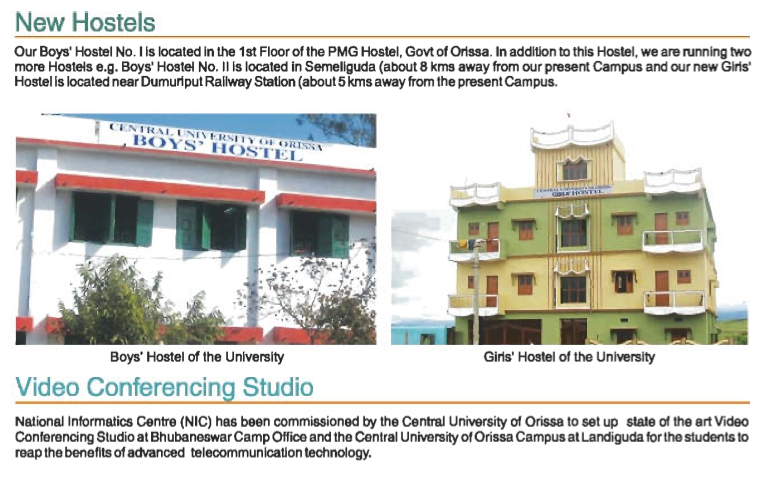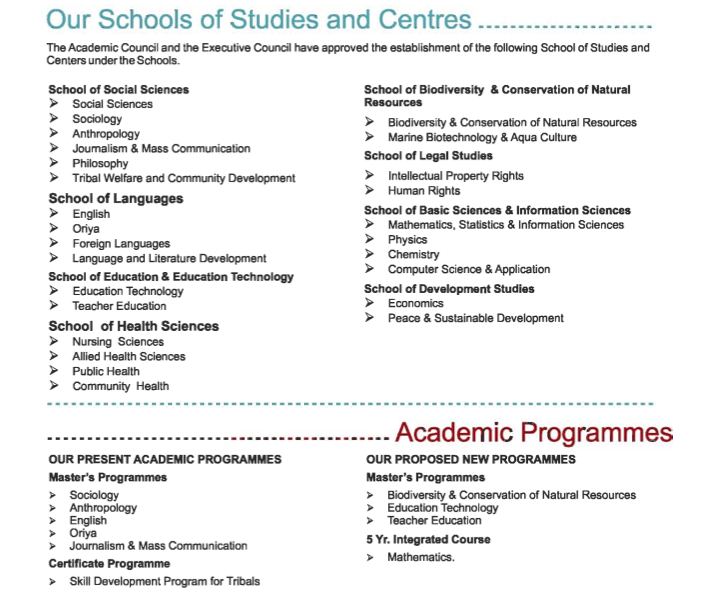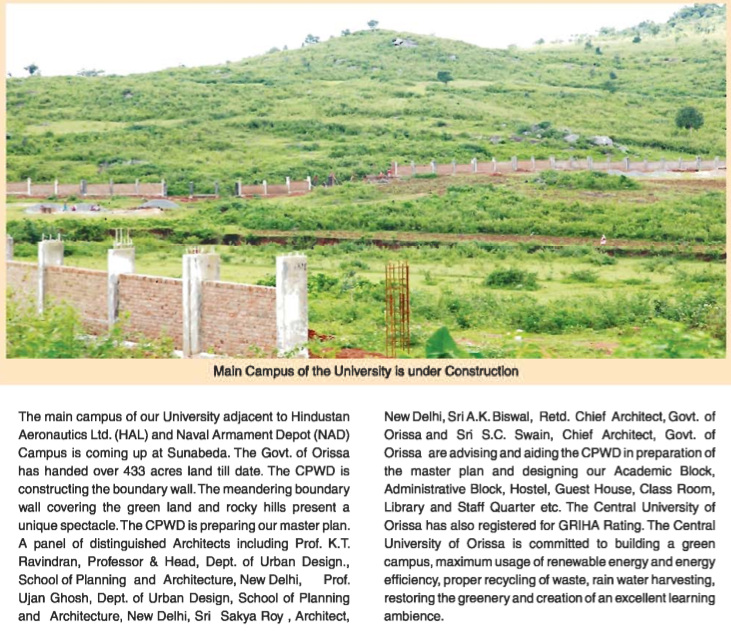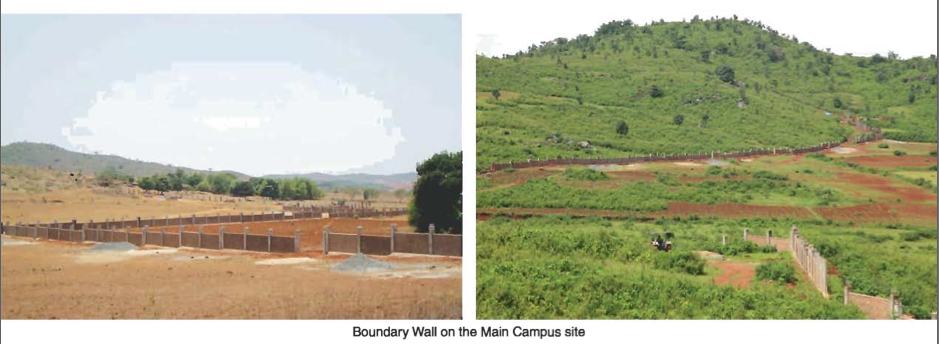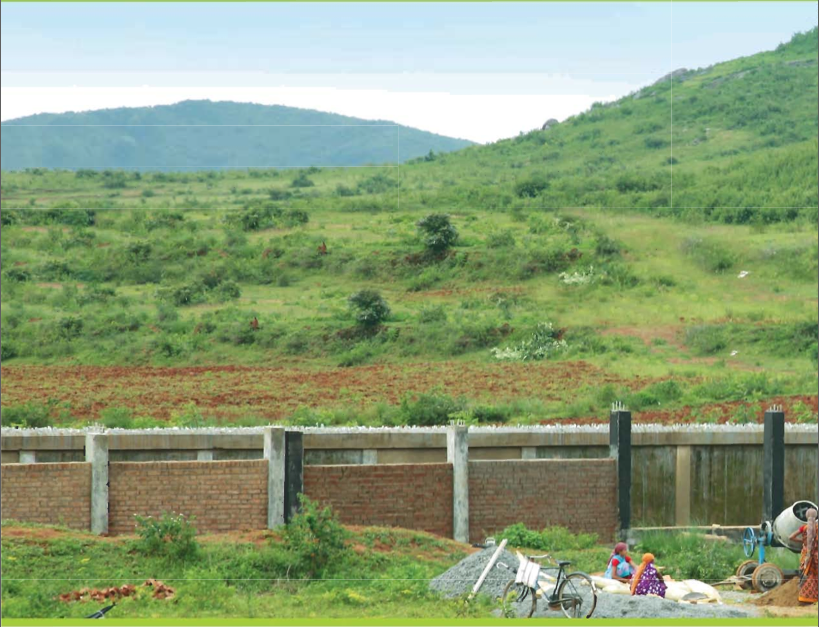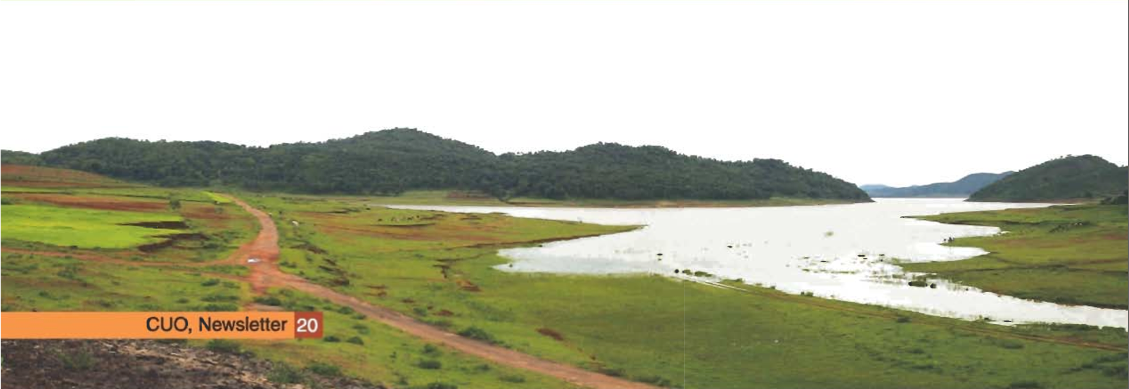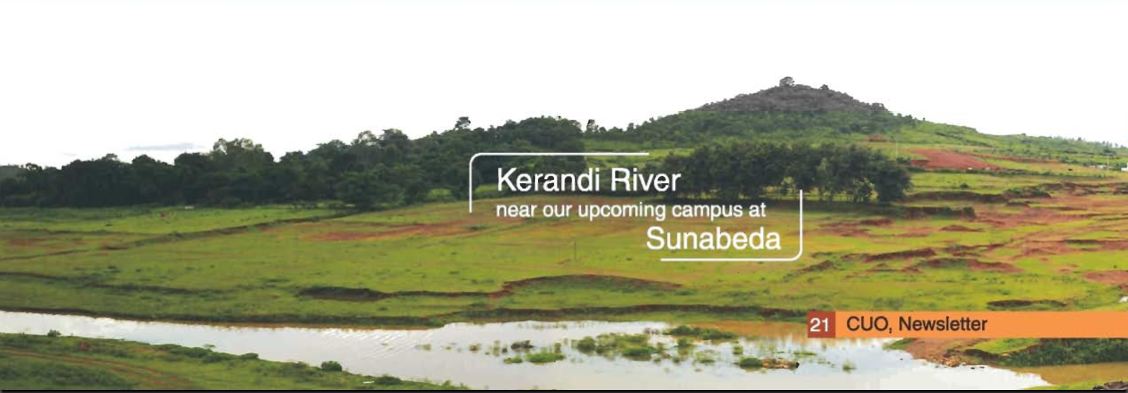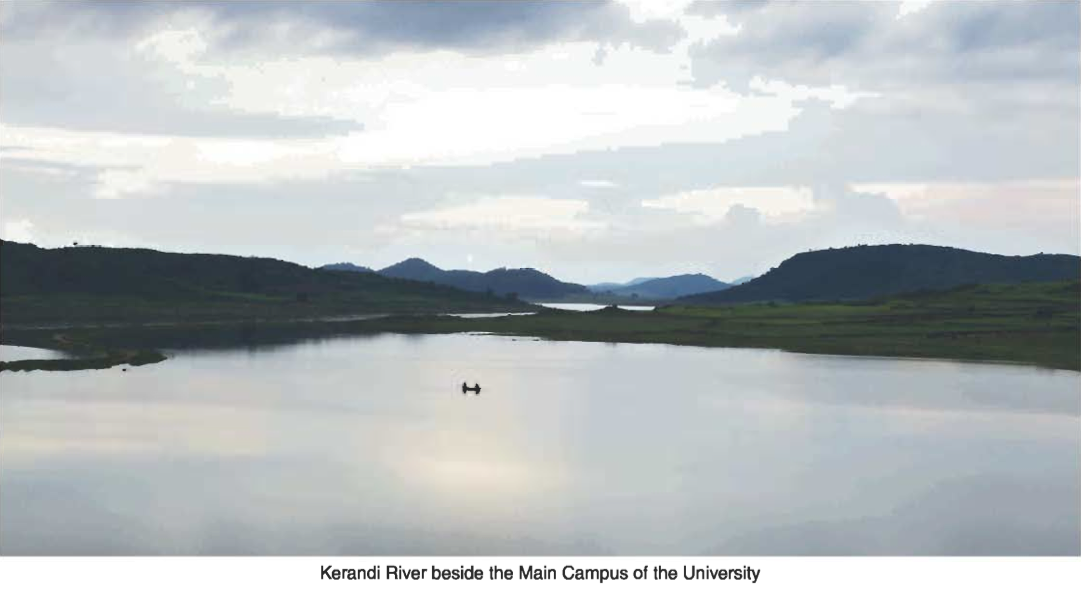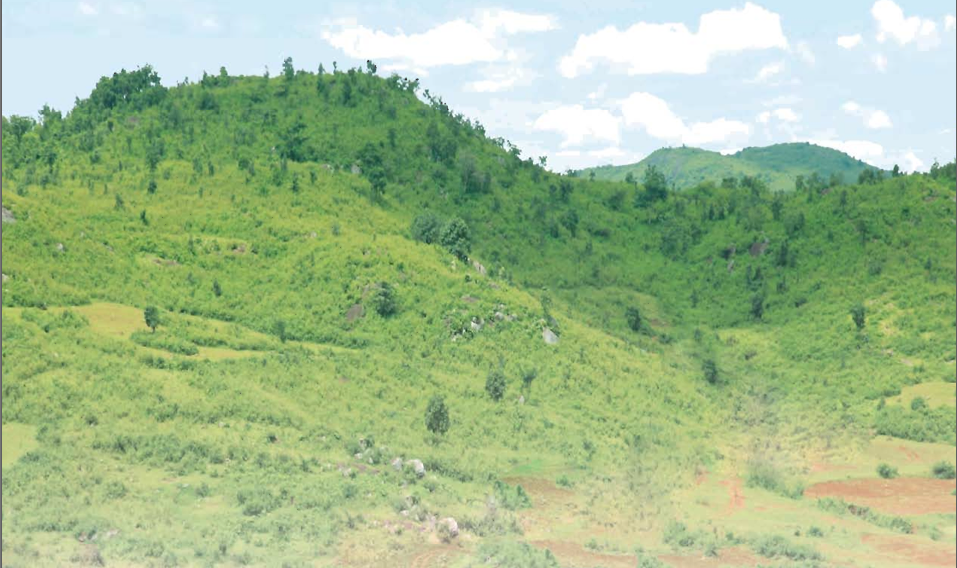Following is an excerpt from a report in the Times of India.
… the 12th Plan period document of UGC has proposed 20 exclusive universities for them and 800 constituent colleges under the Central varsities to ensure equity in access to quality education.
The University Grants Commission (UGC) has also sought a four-time hike in allocation during the Five Year Plan period from Rs 46,632 crore to Rs 1,84,740 crore to achieve its proposed initiatives.
The initiatives also include upgrading of autonomous colleges with potential of excellence, enhancing intake capacity of institutes of higher education and development of ‘college cluster universities’.
… Giving thrust on women’s education, the plan document has proposed 20 universities facilitating their entry into higher education even from very traditional background and rural and sub-urban areas.
The Central government is proposed to fund their establishment while the State governments may provide the land and help to establish such universities, the document states while holding that the idea was included "because the social dynamics of our system".
In the past there have been proposal for a womens IIT in the current President’s home town. I think the approach of having 20, distributed across the larger states of the country, is more equitable than having a few in the constituencies of powerful people. Inside each state these universities should perhaps be in strategic places, perhaps in their second largest metro areas, thus giving a push to develop additional metro areas.
January 26th, 2012
The following is from http://www.centraluniversityorissa.ac.in/Faculty_Details.asp?pgid=4 with the information in blue added via web searching.
| 1. Dr. Kanhu Charan Satapathy (Centre for Anthropological Studies) Ph.D in Anthropology, 2007, Utkal University. Previously faculty at SM Govt. Women’s College, Phulbani. Successfully completed the UGC Refresher Course training program in Anthropology at UGC Academic Staff College, Utkal University, Bhubaneswar, Orissa. Published a book on "Refugees’ Health" by Athena Books, 2010. Presented a research paper entitled ‘Tibetans in India and Their Coping Strategies from a Bio-Cultural Perspective" at the National Seminar on Bio-Cultural Anthropology: Prospects and Challenges, organized by Post-Graduate Department of Anthropology, Utkal University, Bhubaneswar in Collaboration with Anthropological Survey of India, Kolkata from 27-28 March, 2010. |
|

|
| 2. Dr. Meera Swain (Centre for Anthropological Studies) Previously faculty at NISWASS Bhubaneswar. Presented a research paper entitled "Social Responsibility, Awareness and Participation of Local Communities in Conserving the Coastal Environment: A Study in Orissa, East Coast of India" at the National Seminar on Bio-Cultural Anthropology: Prospects and Challenges, organized by Post-Graduate Department of Anthropology, Utkal University, Bhubaneswar in Collaboration with Anthropological Survey of India, Kolkata from 27-28 March, 2010. |
|

|
| 3. Dr. Debendra Biswal (Centre for Anthropological Studies) Ph.D in Anthropology, Delhi University. Thesis title: Ecology and Health : A Comparative Study of Kutia Kondhs and Gonds in Orrisa. Presented a research paper entitled “Ecosystem approach in health: Is it holistic or partial?” at the National Seminar on Bio-Cultural Anthropology: Prospects and Challenges, organized by Post-Graduate Department of Anthropology, Utkal University, Bhubaneswar in Collaboration with Anthropological Survey of India, Kolkatafrom 27-28 March, 2010. |
|

|
| 4. Dr. Kailash Bantha (Centre of Odia Language & Literature) Publication of D Litt.Thesis titled "Fakir Mohanka Katha Sahitya re Karma Fala". Edited "Ratnakar Chaininka Charoti Chhoto Natak and Amurta Manara Murta Bhaskar". Publication of Ph.D thesis titled "Oriya Upanyasre Shaitan Charitra". Felicitation by "Dakhin Orissa Sanskrutik Sansad, Malkangiri". |
|

|
| 5. Dr. Rudrani Mohanty (Centre of Odia Language & Literature) Words fail to express my heartfelt feelings when I boarded Hirakhand Express to join as a faculty in the noscent Central University at the bosom of nature in Koraput. Lush green hills, the beautiful bounties of nature, the offectionate studentant teacher relationship in campus added a lively chapter in my life under the caring and guiding umbrella of our dynamic University authority. It makes my life poetic as well as practical and engrossing. |
|

|
| 6. Dr. Ganesh Prased Sahu (Centre of Odia Language & Literature) The Central University of Orissa, Koraput has created educational revolution in Orissa. Basically the Tribal Students of southern Orissa will be involved in that progress. The University has focused on Humanities Study like School of Languages (Oriya & English) and School of Social Sciences (Anthropology & Sociology). The students are really lucky as the first batch of this University. They are keenly interested to attend class programmes at Koraput and try to prove their potentialities through examinations. Being a lecturer I always trying to inculcate inclinations of subjects with deep root of knowledge to my students. Every part towards development of this University is going on smoothly with a proper guidance and good ideology. I wish all betterment and a prosperous future to this new Central University. |
|

|
| 7. Dr. Kapila Khemundu (Centre for Sociology Studies), Ph.D in 2008-09 from JNU. Thesis: Indian Sociology and its Engagement with Values: A Comparative Study of Select Discourses. It is encouraging that the newly established Journalism and Mass Communication, Anthropology, Sociology, Oriya and English Departments in the Central University of Orissa, Koraput are shaping up under the dynamic leadership of University authority along with newly recruited young energetic faculty. Their commitment towards teaching and learning activities is positive indication to establish a vibrant academic tradition to achieve the aims and objectives of the higher education in the country. I firmly believe despite having its location in remote area this university will be recognized in near future as a centre for excellence in education. |
|

|
| 8. Aditya K. Mishra has joined as a Lecturer in the Centre for Sociological Studies on 8th February, 2010. He has done his M.A., M.Phil & Ph.D (TBA) from the prestigious University of Hyderabad. He has published various research papers and reviews in leading peer-reviewed journals. He has also presented several research papers in national and international conferences. His research interests include Sociology of Development, Sociology of Health, Environmental Sociology and Contemporary Socio Economic issues. He can be reached at adityamishra80@gmail.com
Presented a research paper (co-authored by Prof. E. Haribabu [University of Hyderabad]) entitled ‘Interrogating Participatory Biodiversity Conservation: Social Capital, CBCDCs and Conservation Outcomes’ at the National Seminar on Bio-Cultural Anthropology: Prospects and Challenges, organized by Post-Graduate Department of Anthropology, Utkal University, Bhubaneswar in Collaboration with Anthropological Survey of India, Kolkata from 27-28 March, 2010.
|
|

|
| 9. Sujit Kumar Mohanty has joined as a Lecturer in the Centre for Media Studies on 8th February, 2010. He has done his M.A. (Communication) from the prestigious University of Hyderabad. He is currently pursuing his M. Phil in the Centre for Regional Studies, University of Hyderabad. He was worked with a leading English newspaper of the Southern India – Deccan Chronicle and also undertaken a project with UNICEF. He was also associated with CNN – IBN (New Delhi) for a short while and then moved to TV9 – English as an assignment editor. His research interests include Media and Development, Film Studies & Religion and Politics in Media. He can be reached at sujitadm@gmail.com |
|

|
| 10. Talat Jahan Begum has joined as a Lecturer in the Centre for Media Studies on 8th February, 2010. She has done her M.A in Journalism and Mass Communication from Utkal University. With a teaching experience of 20 years, she has taught Journalism and Mass Communication at the prestigious BJB Autonomous College at Bhubaneswar. She was worked as Project Coordinator for UNICEF sponsored Project on "Children Reporting Children Issues". She has participated in International Visitor Leadership Program on "Community Approaches to Social Issues" in USA in 2008. She has also worked with ETV. She is actively involved with the NSS. Her research interests include Mass Communication Research, Community Media &TV Journalism. She can be reached at talattjb@yahoo.co.in |
|

|
| 11. Sony Parhi (Centre for Journalism and Mass Communication Studies) The Central University of Orissa, Koraput is the outcome of long cherished dreams. Hard work, initiative, collaboration and readiness to face challenges are hallmarks of Journalism and Mass Communication faculty and students. The remoteness of the place and challenges in communicating effectively with a varied audience give ample avenues to our entire team. Rich cultural heritage of this region and the task of disseminating the same through agencies of mass media for holistic progress is our goal. This University also teaches me to pursue knowledge and research while maintaining empathy and harmony towards my environment. |
|

|
| 12. Sanjeet Kumar Das (Centre of English) Having joined in the Department of English, Central University of Orissa, Koraput, I am overwhelmed to disseminate my experiences to young and energetic students in the field of language and literature. The leitmotif of our ‘School of Languages’ is to import education and research in new vistas such as Women writings in the Post modern era, Ecocriticism, literature on Diaspora writings etc. In the domain of linguistics, we focus our research on applied areas such as Computational linguistics, Evolutionary linguistics, Biolinguistics, Cognitive linguistics, Neuro-linguistics, Ethno linguistics, and Geolinguistics etc. Nevertheless, theoretical linguistics like Phonology and phonetics, morphology, syntax, semantics and pragmatics are also emphasized for the development of communicative competence among the students. I am pursuing my Ph. D in the Department of Humanities & Social Sciences, IIT Kanpur. |
|

|
| 13. Himani Mishra (Centre for Sociology Studies) The Central University of Orissa, Koraput is now in the stage of infancy and has a long way to go ahead. Still it is constructing the good architects for our future and one day it will definitely achieve this goal where it will be among the best Universities giving proper shapes to the students. Being a part of this newly built institute, I feel glad. |
|

|
March 8th, 2011
Now that the 12th plan discussions have started states have started pushing for various upgradations. Earlier we reported Karnataka’s efforts regarding upgrading UVC E to an IIT. Now there is report on West Bengal’s efforts to make Jadavpur University a central university. Following is from a report in Telegraph. It also mentions President Patil’s efforts to upgrade a university in her home area to a central university.
Union finance minister Pranab Mukherjee has thrown his weight behind an effort to convert Jadavpur University into a central university.
In a letter last month, Mukherjee requested human resource development minister Kapil Sibal to consider a proposal to turn JU into a central varsity by an act of Parliament.
“The letter is under the consideration of the ministry. The HRD ministry will seek the views of the finance ministry and the Planning Commission on the proposal for converting it into a central university,” a source told The Telegraph.
… JU has been identified by the University Grants Commission as one of the first five universities in the country with “potential for excellence”. It has also been accorded the highest grading of “five stars” by the National Assessment and Accreditation Council (NAAC).
“The HRD ministry will move forward on the basis of the feedback from the finance ministry and the Planning Commission on the letter from Mukherjee. The finance ministry and the Planning Commission had approved setting up 16 central universities under the 11th Plan. All these universities have already been set up. Now if they give the go-ahead, the process will be initiated for the conversion of Jadavpur University into a central university,” the source said.
A few months ago, President Pratibha Patil had written to Prime Minister Manmohan Singh for converting Sant Gadge Baba Amravati University in Maharashtra into a central university. A source said the conversion may be possible in the 12th Plan (2012-17).
Odisha needs to make similar efforts.
January 4th, 2011
The following were obtained from various sources. I don’t vouch for their 100% correctness. Please use them at your own risk.
September 2nd, 2010
The following is obtained from a TOI report.
| University |
Total sanctioned faculty positions |
Vacancies |
Vacancy Percentage |
| Sikkim University |
201 |
169 |
84% |
| Allahabad University |
|
|
43.5% |
| JNU |
728 |
237 |
32.5% |
| IGNOU |
692 |
273 |
40% |
| Delhi university |
1500 |
763 |
51% |
| Maulana Azad National Urdu University |
248 |
118 |
|
| Aligarh Muslim University |
1387 |
235 |
|
| BHU |
1842 |
352 |
|
| Hyderabad University |
541 |
184 |
|
| Total of 22 central universities |
11085 |
3777 |
34% |
.
May 6th, 2010
The following is extracted from the latest CUO prospectus available at http://cuorissa.org/Central-University-of-Orissa-koraput-india/files/2032010KprospectusCUOdraft%5B1%5D.pdf.
The current schools and centers are:
- School of Languages
- Center for Odia language and literature
- Center for English language and literature
- School of Social Sciences
- Center for Anthropological Studies
- Center for Sociological Studies
- Center for Media Studies
It proposes the following schools and centers.
- School of Basic Sciences : (a) Mathematics
- School of Health Sciences: (a) Nursing, Public Health and Community Health
- School of Development Studies: (a) Economics
- School of Biodiversity and Conservation
- School of Education technology
- Center for Indigenous Studies
April 27th, 2010
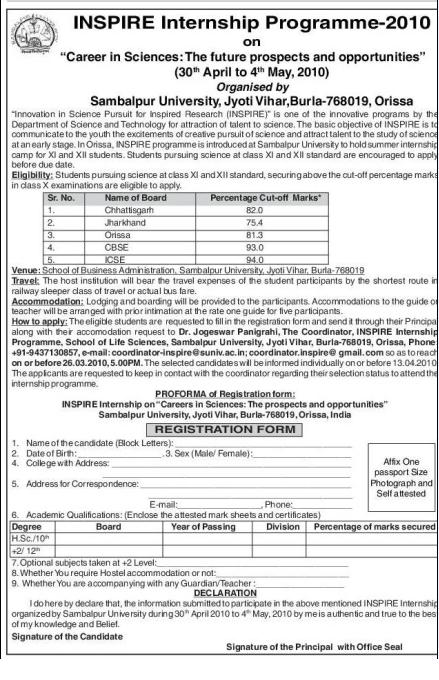
Kudos to the people at Sambalpur University (The VC and the others) for organizing this program. After this they should pursue the establishment of a UM-DAE CBS (Center for Excellence in Basic Sciences) type of institute associated with Sambalpur University. The current VC has the vision and ability to make it happen. Note that the VC has initiated and obtained approval and promise for funding for a IIIT type of institute at Sambalpur University and he is also pursuing a sports institute at Sambalpur University. Having these institutes will pave the way for Sambalpur University to become an elite university in the country. In this regard, there is a recent proposal to create an IVY-league type of elite league of central universities in India. Following is an excerpt from a report in Times of India on that.
An Ivy League similar to the ones in countries like US and Germany comprising topmost universities of the country will be formed within two years, announced Kapil Sibal, Union human resource development minister here on Saturday.
… Addressing the media after the VCs’ meet, Sibal said the universities in the Ivy League will be given complete autonomy without any government control in developing the staff, faculty, students and research and development.
… Sibal said that central universities will be allowed to decide on their faculty and staff strength from the coming academic year. “Based on their budgetary allocations, the universities will be allowed to decide the number of faculty positions they need,” he said.
He also said that credit transfer system will be in place from the coming academic year so that the students from one university will be allowed to attend the courses of other universities.
March 14th, 2010
Following is from a report in Indiaedunews.
Proposed Central varsities in two remote areas of the country – Bihar and Kerala have received a denial from the Human Resource Development (HRD) ministry to host new Central universities for their states.
Far-flung Motihari and Kasargod in Bihar and Kerala respectively do not qualify up to the desirable standards for a site to be constructed for such universities as they lack the physical and social infrastructure to proceed.
The ministry is learnt to have asked the two states to come up with an alternative location for the set up.
The Central government clearly opposed the stand of the State governments, academics and development votaries who stood by the decision to host the new varsities in the remote areas of the country, which will boost its economy and help in creation of new and additional infrastructure.
The necessary conditions needed for the set up of a university in both Motihari nad Kasargod area are not feasible due to poor access, connectivity and lack in infrastructure in the form of good schools which are vital to attract quality faculty in the varsity.
While Kasargod, located in the northern part of Kerala suffers serious connectivity issues, Motihari in East Champaran in Bihar is considered a backward region.
The ministry felt that constructing such institutes in these areas will mar the whole criteria of establishment since they would not be able to provide quality education through qualified teachers, as they would not be interested to enter in such areas.
A similar problem has been faced by the Central University at Koraput in Orissa which is facing a serious faculty crunch in terms of quality.
Lack of adequate facilities, along with absence of good schools and hospitals are proving to be deterrents for the faculty who are unwilling to shift over to such areas.
In regards to Koraput, Orissa government needs to take some proactive steps quickly; before the problem becomes worse. Earlier we suggested the following.
- Start a daytime train between Bhubaneswar and Koraput. The distance between them is 679 kms. (Note that Koraput has daily overnight trains to Bhubaneswar and Howrah and a new daily train to Rourkela has been announced in this year’s budget.)
- Start an intercity between Visakhapatnam and Jeypore via Koraput. (Distance is 258 kms.)
- Open a knowledge park of 200 acres near the central university. This knowledge park should contain an STP, and other amenities. the state should invite trustees of some of the top private engineering colleges to establish educational institutions such as engineering colleges in this knowledge park.
In addition, the state should vigorously pursue the proposed airport in Jeypore.
December 31st, 2009
Update: Samaja has a report on this where it first says that the Central Univ in Koraput was demanded to be named after Utkalmani and then it says that the central univ in Bhubaneswar was demanded to be named after Utkalmani. See the article at the bottom. I guess different people in the assembly demanded different things.
Following is from a report in Orissadiary.com.
During the 11th Yojna there is a proposal to open a Central University in Bhubaneswar. The Chief Whiff of Opposition Prasad Harichandan Demanded in the House on Friday to request the Centre for name the University as Utkalmani Central University. Legislature Santosh Singh Saluja also seconded the proposal.
Just to avoid confusion, the 11th plan details are already in place and the central university mentioned above in all probability refers to one of the two central universities (for Orissa) out of the 30 that are being established in India during the 11th plan. Following is a walk through on how the name evolved from "world class central university" to "national university" to "innovation university." However, many still refer to it as central university which has caused some confusion.
On March 28th 2008 http://pib.nic.in/release/release.asp?relid=36955 it was announced that:
State-wise List of Cities Identified for locating 14 Central Universities during the XIth Plan which would aim to achieve world class standards
…
12. Orissa – Bhubaneshwar
Later on April 21, 2008 it was mentioned in the Rajya Sabha (see http://pib.nic.in/release/release.asp?relid=37684)
It has also been decided to locate 14 world class Universities, one each in the 14 States / Regions as detailed in the Annexure.
Later on Dec 16 2008, it was mentioned in the Lok Sabha (see http://pib.nic.in/release/release.asp?relid=45702 )
The Government proposes to establish 14 National Universities aiming towards world-class standards the 11th Plan period. A State- wise list of cities identified or locating these universities is annexed. A preliminary draft of the Concept Paper on setting up of these universities was prepared by an Expert Committee constituted by the University Grants Commission. The Expert Committee has held extensive consultations with eminent educationists, academics and policy makers. The relevant recommendations of the National Knowledge Commission have also been taken into consideration by the Expert Committee while revising the draft Concept Paper. The Concept Paper is, however, yet to be finalized by the Committee.
…
This information was given by Shri Arjun Singh, the Minister of Human Resource Development in a written reply to a question in the Lok Sabha today.
The February 12th 2009 MHRD press release of MHRD minister Mr. Arjun Singh’s speech written for Bhubaneswar IIT foundation laying (which he did not attend) says the following (see http://pib.nic.in/release/release.asp?relid=47448)
The Government of India in its Eleventh Plan has given a major thrust to education. The Central Government has taken several initiatives in respect of new institution building. These include setting up of 30 new Central Universities …
I am happy to say that the State of Orissa is also getting its due share. We have decided in this Plan Period to have in Orissa State, one Central University, one National University aiming for world class standards, …
On July 21 2009, the following was again mentioned in the Rajya Sabha. (See http://pib.nic.in/release/release.asp?relid=50715)
The Government is considering a proposal to set up 14 Universities aiming at world class standards at the following locations:-
…
14. Bhubhaneshwar (Orissa)
Universities aiming at world class standards would act as exemplars for other universities including Central Universities, in benchmarking standards of teaching and research to those prevailing in the best universities in the world. This information was given by the Minister of State for Human Resource Development Smt. D. Purandeswari, in a written reply to a question, in the Rajya Sabha today.
Somewhere down the line, the nomenclature changed to "Innovation Universities" and two concept papers for it were made available at
Following are some excerpts from the first one:
… the XI Plan proposes the establishment of 14 Innovation Universities aimed at world class standards. These Universities would be at the fount of making India the global knowledge hub and set benchmarks for excellence for other Central and State Universities.
Past the 11th plan there is possibility of additional central and national/innovation universities. (The Knowledge commission has talked about 50 national universities.) Orissa should be ready for these. In particular infrastructure (read "airport") is often being mentioned as an important criteria; especially for the national/innovation universities. Thus before the 12th plan document starts getting drafted, Orissa must have the Jharsuguda and Rourkela airports in operation and Berhampur linked properly to the Bhubaneswar airport through regular airport shuttle.
In addition Orissa leadership should from the very beginning (of the 12th plan drafting) focus on other parts of Orissa; otherwise Orissa will completely miss out on the new developments of the 12th plan which is only 3 years away. More details on how Orissa government can proactively shape the 12th plan by being prepared and by pushing for institutions that can be established in less-developed places (Balangir, Bhawanipatna, etc.) is discussed in http://orissa2020.org.
Samaja’s confusing report is below.

December 6th, 2009
Following is extracted from Swaha Sahoo’s report at http://in.news.yahoo.com/32/20091203/1053/tnl-makeshift-universities.html. It originally appeared in Hindustan Times. (The article has the first name of the CUO VC wrong. Her name is Surabhi Banerjee and not Saswati Banerjee.)
- Central University of Orissa, Koraput: Started with four teachers taking post-graduate courses in English, Oriya, sociology, anthropology and tribal studies, and journalism and mass communication. One lecturer left soon after joining."We are not short of faculty and have visiting teachers. The procedure to appoint regular faculty takes time," said vice-chancellor …. The university has plans to appoint 15 faculty members initially. With 150 post-graduate students … Guest lecturers are not too keen on visiting the Central University of Orissa because reaching Koraput, 450 km southwest of state capital Bhubaneswar, is difficult. A single passenger train a day runs from the state capital Bhubaneswar and takes 18 hours to reach Naxal-affected Koraput. The closest airport is in Vizag in Andhra Pradesh, a five-hour drive. "Unless some sort of infrastructure development happens in and around the central universities, attracting faculty and providing quality education will be difficult,” said … Banerjee.
- Central University of Haryana, Mahendragarh: Lord Krishna Central University of Haryana has been functioning temporarily from the Government Education College at Narnaul, the headquarters of Mahendergarh district, about 130 km west of Delhi. There is no place for teachers and students to stay at the college campus. There is a community health centre (CHC), only one cinema hall, a government school, and a few private schools in Mahendergarh. About 40 km from this place, about 500 acres of panchayat land for the university is under transfer. The process of admission for the M Phil and Ph D courses in English, Economics and Political Science is on. The temporary administrative office of the university is in Gurgaon, adjacent Delhi.
- Central University of Bihar: The state government wants to set up the central university in Motihari, 135 km north of Patna. Vice-Chancellor Janak Pandey has proposed for setting up a multi-centre campus, with Motihari as the main venue. Motihari does not have air connectivity. The university is functioning at a makeshift campus in Patna, mostly with teachers on contract from the Tata Institute of Social Sciences, Mumbai, and the Institute of Development Studies, Jaipur. … In Bihar, the HRD ministry has attached conditions to the state government’s proposal for a central university at Motihari, 135 km north of Patna. Sibal wrote to Bihar Chief Minister Nitish Kumar in October that the state government should develop infrastructure such as roads and air connectivity as soon as possible.
- Central University of Kerala: .. began two interdisciplinary courses – MA in Comparative Literature and Economic Theory and Global Governance – while only five of the 25 seats in Economics and 15 of the 25 seats in English filled. Teacher shortage …
- Central University of Gujarat: … 25 posts have been sanctioned, but since recruitment is yet to take place, the university has begun functioning with three teachers on contract, temporarily in Gandhinagar. Land is yet to be allotted.
- Central university of Karnataka: “We have constructed just a boundary wall on the 621 acres of land handed over to us and will soon begin construction,” said A.M. Pathan, vice-chancellor of the Central University of Karnataka.
- Most of the universities have come or are slated to do so in educationally backward areas such as Koraput (Orissa), Thiruvarur (332 km south of Chennai), Gulbarga (663 km north of Bangalore), Mahendragarh (in Haryana; 130 km from Delhi), Kasargod (650 km north of Thiruvananthapuram) and Bathinda (Punjab; 146 km west of Chandigarh). The following have temporary locations: Patna, Brambey (20 km west of Ranchi in Jharkhand), Jaipur, Gandhinagar and Kasrgod. The ones in Himachal Pradesh and Jammu & Kashmir have not started functioning.
- … only five central universities (Haryana, Karnataka, Orissa, Punjab and Tamil Nadu) have managed to find land for setting up permanent infrastructure.
- In Himachal Pradesh, for instance, the dispute between the state and Central governments has come in the way of setting up the campus.
The following table from http://www.orissa2020.org/appendix/location-of-new-central-universities gives a bit more information on the locations.
| City – Metropolitan area |
State |
Metro population |
| Gandhinagar – Ahmedabad (temporary?) |
Gujarat |
5,334,314 |
| Srinagar |
J & K |
1,104,489 |
| Khunti, Ranchi |
Jharkhand |
1,066,449 |
| Jammu |
J & K |
690,924 |
| Bikaner (Changed to near Ajmer, 80 kms from Jaipur) |
Rajasthan |
624,577 613,000 |
| Gulbarga |
Karnataka |
534,417 |
| Sagar |
Madhya Pradesh |
351,537 |
| Bilaspur |
Chhatisgarh |
319,129 |
| Bathinda |
Punjab |
269,520 |
| Koraput-Sunabeda-Jeypore |
Orissa |
200,000 |
| Motihari |
Bihar |
121,475 |
| Tiruvarar |
Tamil Nadu |
61,270 |
| Kasaragod |
Kerala |
52,683 |
| Tehri Garhwal |
Uttarakhand |
25,425 |
| Mahendragarh |
Harayana |
23,977 |
| Kangra |
Himachal Pradesh |
9,155 |
These are all teething problems and as the campuses get built things will change for the better. Despite these problems, it is wise that many of the states picked the backward areas for these universities.
Some of the things the Orissa government needs to do is:
- Start a daytime train between Bhubaneswar and Koraput. The distance between them is 679 kms. (Note that Koraput has a daily train to Howrah and a new daily train to Rourkela has been announced in this year’s budget.)
- Start an intercity between Visakhapatnam and Koraput. (Distance is 216 kms.)
- Open a knowledge park of 200 acres near the central university. This knowledge park should contain an STP, and other amenities. the state should invite trustees of some of the top private engineering colleges to establish educational institutions such as engineering colleges in this knowledge park.
Another point to note is that Central University of Bihar VC is planning a multi-center campus. CU Orissa should do the same and have multiple centers in the KBK region.
December 5th, 2009
Update: The following was written before I saw this article in Pioneer.
Tathya.in has a report on Dr. Digamabara Patra’s request for a national or central university in Bhawanipatna, Kalahandi. A lot of the arguments made there make sense. Many of the recent central universities have been established in rural and semi-urban areas and indeed there is no reason why one should not be established in Bhawanipatna; especially since its citizens have been asking for one for more than 2 decades.
However, as mentioned in the article https://www.orissalinks.com/archives/3229 adequate infrastructure seems to have been an important factor in determining the locations of the new IITs, IIMs and National universities.
For Orissa to have them in locations ouside of Bhubaneswar, there are two ways to go about it.
- Argue that adequate infrastructure should not be a requirement or they will automatically come once the institutions are established.
- Develop areas outside Bhubaneswar to have adequate infrastructure.
To me pursuing (2) has a higher chance of success than pursuing (1) and even if (1) is successful the institutes/universities in locations without appropriate infrastructure will struggle until the infrastructure eventually catches up which may take a long time if just left to fate. (Such a struggle may result in Orissa not being given in appropriate numbers additional central/national institutes.)
[In India people sometime point out that IIT Kharagpur was established in a rural location. First, Kharagpur is only 116 kms from Howrah. Second it has been a major railway junction for a long time. Third it was the first IIT and for a long time only one of 5 IITs. Similarly Roorkee was the oldest engineering college and is close to Haridwar and Dehradun. There are a few top universities and institutions in the US that are in rural areas, but these are exceptions, and the infrastructure in rural areas of US are quite good compared to rural areas of India. For example, Univ of Illinois at Urbana Champaign and Penn State University in State College, PA are often mentioned in that context. But both do have small airports with commercial flights.]
Before we suggest what needs to be done regarding developing areas outside Bhubaneswar to have adequate infrastructure, let us address what may be coming in the future and why Orissa needs to do this urgently so as to not risk missing future allocations of national institutions.
The National Knowledge Commission (NKC) in its December 2006 note on higher education has explicitly suggested 50 national universities in India. It says:
We recommend the creation of up to 50 National Universities that can provide education of the highest standard. As exemplars for the rest of the nation, these universities shall train students in a variety of disciplines, including humanities, social sciences, basic sciences, commerce and professional subjects, at both the undergraduate and post-graduate levels. The number 50 is a long term objective. In the short run, it is important to begin with at least 10 such universities in the next 3 years. It is worth noting that the National Universities need not all be new universities. Some of the existing universities could also be converted into National Universities, on the basis of rigorous selection criteria, to act as exemplars. We recognise that there could be a human resource constraint if faculty members are not available in adequate numbers to establish these universities.
The current government has implemented most of the recommendations of the NKC and exceeded some of them. For example, instead of the recommendation of 10 national universities in the three years following the report (2007-2010), establishment of 14 have been announced. Moreover, the higher education budget has been increasing drastically from one five year plan to the next. The 12th five year plan starts in 2012 and it is expected that it will take up on the long range objectives of the knowledge commission. In other words there could and should be more central and national universities in the 12th plan.
[My impression is that how soon additional national universities are established will depend on the success of the first 14. It seems to me that the locations of the first 14 have been greatly influenced by the consideration of, where in each of the states selecetd, does it have the best chance to succeed.]
Unless Orissa is prepared for it, Orissa may lose out pieces of those plans on lack of infrastructure grounds. Other states with multiple locations with adequate infrastructure will get preference and Orissa may lose out.
However, 2012 is still 3 years away and if adequate steps are taken very soon, Orissa should be able to get its fair share.
The pity is there are areas in Orissa which are on the verge of having the necessary infrastructure, mostly through private investment, but because of non-constructive opposition, blind suspicion towards industrialization and the relcucatnce of many to speak out in favour of development and industrialization, the development and associated infrastructure building has been greatly hampered. The governments (state and center) are also at fault for their sluggishness on some aspects.
Following are some suggestions:
- The state government should push for the completion of the airport in Jharsuguda within a year.
- It should make an all-out effort to have commercial flights operating out of the existing airport in Rourkela. In general, the people of the area need to recognize the existing infrastructure and potential of Rourkela and take advantage of it. Currently, as a friend of mine would say, Rourkela is an orphan. This is a pity. It is a big asset to Orissa, especially to the western parts of Orissa; but is severely underutilized and undermined.
- Coming back to Jharsuguda, the people there should follow a smarter approach in not opposing and rather facilitating industries coming up there, and at the same time being vigilant about environmental and land acquisition related R & R issues. If these industries and investment are allowed to materialize there soon, then Sambalpur-Jharsuguda area would become a large metro with adequate infrastructure to have and support any and all kinds of institutes and universities. But will the people do that? Or will they continue to be controlled by or scared of the anti-industry activists.
- Similarly, both Bhawanipatna (Lanjigarh to be precise) and Rayagada areas have industrial investors who have been senselessly opposed. If the people would take a smarter approach that mixes development with being vigilant about environmental and land acquisition related R & R then both these areas would be able to get infrastructure where a central university (and possibly more) would flourish. But will the people do that? Or will they continue to be controlled by or scared of anti-industry activists. In Lanjigarh, Kalahandi, the local MP has recently taken a more sensible approach. I hope there is a quick resolution as this area desperately needs development and the resulting infrastructure.
- The state government should push for the rail infrastructure, particularly, the Khurda-Balangir line, the Talcher-Bimlagarh line and connectivity to Kalahandi, to be completed at the earliest.
The above is extremely important for the development of the western parts of Orissa where there is often a feeling of neglect. If the people there do not follow a smarter approach and only follow the strange approach that many (not all) seem to be following (such as opposing industrialization and thus infrastructure building but wanting things that need infrastructure) the places that follow a smarter approach (inside and outside Orissa) would be gainers. The same is happening in some other places in Orissa too – Paradeep and Kalinganagar come to mind, but these places are in closer proximity to Bhubaneswar and because of that they may be less harmed.
October 4th, 2009
Update on 27th April 2011: The Central University location has been changed to Bander Sindri near Ajmer and only 80 kms from Jaipur. The Innovation University (previsouly referred to as National University) aiming for world class is now pushed for Jaipur. [Times of India].
Tathya.in has a report that mentions some official saying that because of the lack of an airport in Rourkela central government will not agree to have ESIC medical college in Rourkela. I think this is a completely frivolous argument; I don’t see much connection between an ESIC medical college and an airport. (Often airport is a codeword for adequate infrastructure. If that is the case Rourkela indeed has the infrastructure for an ESIC medical college.)
However, in regards to certain centrally funded institutions, such a requirement is in the background and mentioned by journalists, even if they may not be spelled out explicitly. So while pushing for an ESIC medical college in Rourkela, we should set our target to push for more functioning airports as a next action item. Following is a more detailed analysis.
Given below are the locations of some national institutions and some related attributes. It is easy to see that for the locations of IITs, IIMs and National Universities being near (say within 120 kms or 2 hrs) an operational airport has been an important factor. For national universities, in addition being in a large (1 million plus metropolitan area) area with other research institutes has also been spelled out as an important criteria and it is reflected in the locations that are picked.
On the other hand, the newly established central universities are in towns of all sizes and the locations of the NITs are mixed. The next level centrally funded but locally focused technological institutes, SLIET, Longowal, ABAGKC IET, Malda and Central Institute of Technology, Kokrajhar are on purpose established in rural areas and smaller towns. Unlike the NITs these institutions take only local students and also have programs focused on local needs. Nevertheless, their quality need not be bad. For example, SLIET is considered quite good.
Looking to the future following are some points relevant to Orissa.
- For Orissa to have future central institutions like IIM, SPA, etc. to be in a location outside of Bhubaneswar, Orissa must push for the quick establishment of airports and other infrastructure in other parts of the state. For example, the airports in Jharsuguda and Rourkela are the closest to be operational and they should have scheduled flights at the earliest. Otherwise new centrally funded institutions may again be established near Bhubaneswar and crying hoarse after the fact may not be productive.
- Similarly the knowledge commission has proposed the establishment of 50 national universities in the long run. Considering that the education budget significantly increases from one 5 yr plan to the next, I would not be surprised if there is another set of them made during the 12th plan. Orissa must be prepared for that and by that time (there is a short window) have other areas in Orissa with adequate infrastructure that are being deemed necessary for a national university.
- Orissa must take advantage of the industrial and investment interests in Orissa, mostly due to its minerals, and develop metropolitan areas with larger population base. Currently the local people are creating roadblocks rather than helping in such development.
- In 2010 we should do our best to convince the planning commission, the PM and MHRD that the 12th plan (starting 2012) should include more centrally funded institutions of the kind that can be located in rural or semi-urban areas. In particular,
- A centrally funded but locally focused technological institute (like SLIET) in all states. The one in Orissa could be located in Kalahandi or Balangir, the other two KBK districts that lack centrally funded institutions.
- Two regional universities in each major states that are funded 50-50 by the state and the center. (This would be better than one centrally funded institute.)
- Multiple branches of Indira Gandhi National Tribal University in districts with high tribal population.
The NITs.
| City/Town |
State |
Population of city/town |
Population rank |
| Delhi |
Delhi |
18,639,762 |
2 |
| Surat |
Gujarat |
3,196,799 |
10 |
| Jaipur |
Rajasthan |
3,102,808 |
11 |
| Patna |
Bihar |
2,656,318 |
13 |
| Nagpur |
Maharashtra |
2,569,775 |
14 |
| Bhopal |
MP |
1,751,766 |
17 |
| Allahabad |
UP |
1,272,612 |
31 |
| Jamshedpur |
Jharkhand |
1,252,815 |
33 |
| Srinagar |
J & K |
1,104,489 |
41 |
| Calicut |
Kerala |
1,000,802 |
46 |
| Tiruchirapalli |
Tamil Nadu |
963,237 |
49 |
| Jalandhar |
Punjab |
958,854 |
50 |
| Raipur |
Chhatisgarh |
795,104 |
56 |
| Dehradun |
Uttarakhand |
738,889 |
57 |
| Warangal |
Andhra Pradesh |
656,298 |
61 |
| Surathkal, Mangalore |
Karnataka |
612,374 |
66 |
| Pudducherry |
Pudducherry |
575,027 |
71 |
| Rourkela |
Orissa |
550,668 |
75 |
| Durgapur |
West Bengal |
543,922 |
77 |
| Shillong |
Meghalaya |
304,596 |
136 |
| Aizawl |
Mizoram |
295,864 |
140 |
| Imphal |
Manipur |
279,679 |
147 |
| Agartala |
Tripura |
218,028 |
184 |
| Silchar |
Assam |
209,543 |
193 |
| Kurukshetra (Thaneswar) |
Punjab |
157,609 |
249 |
| Panaji |
Goa |
142,336 |
271 |
| Kohima |
Nagaland |
103,210 |
407 |
| Gangkot |
Sikkim |
32,483 |
|
| Hamirpur |
Himachal Pradesh |
17,219 |
|
The IITs.
| City – Metropolitan area |
State(s) |
Metro population |
Metro rank |
State or country Capital |
Rank in state |
Number 1 in the state |
Nearest airpot |
Preferred airport |
| Bombay |
Maharashtra |
21347412 |
1 |
Yes |
1 |
picked |
in area |
same |
| Delhi |
UP, Delhi, Haryana |
18639762 |
2 |
Yes |
1 |
picked |
in area |
same |
| Chennai |
Tamil Nadu |
7305169 |
4 |
Yes |
1 |
picked |
in area |
same |
| Hyderabad |
Andhra Pradesh |
6290397 |
6 |
Yes |
1 |
picked |
in area (60 kms away) |
same |
| Gandhinagar – Ahmedabad |
Gujarat |
5334314 |
7 |
Yes |
1 |
picked |
Ahmedabad (40 kms) |
same |
| Kanpur |
Uttar Pradesh |
3494275 |
9 |
No |
1 |
picked |
in area (only Air India) |
Lucknow (80 kms) |
| Patna |
Bihar |
2656318 |
13 |
Yes |
1 |
picked |
in area |
same |
| Indore |
Madhya Pradesh |
2049193 |
15 |
No |
1 |
picked |
in area |
same |
| Bhubaneswar |
Orissa |
1666429 |
22 |
Yes |
1 |
picked |
in area |
same |
| Guwahati |
Assam |
1038071 |
44 |
Yes |
1 |
picked |
in area |
same |
| Ropar – Chandigarh |
Punjab |
1033671 |
45 |
Yes |
3 |
Ludhiana (19) |
Chandigarh (60 kms away) |
same |
| Jodhpur |
Rajasthan |
987919 |
47 |
No |
2 |
Jaipur (11) |
in area |
same |
| Kharagapur |
West Bengal |
511303 |
82 |
No |
5 |
Kolkata (3) |
Kolkata (120 kms away) |
same |
| Roorkee – Haridwar |
Uttarakhand |
250645 |
166 |
No |
2 |
Dehradun (57) |
Dehradun (1 hr away) |
Delhi (180 kms) |
| Mandi |
Himachal Pradesh |
32014 |
|
No |
3 |
Shimla (194) |
Kullu-Manali airport (60 kms away) |
same |
National Universities
| City – Metropolitan area |
State(s) |
Metro population |
Metro rank |
State or country Capital |
Rank in state |
Number 1 in the state |
Airport with scheduled flights |
Other airport nearby |
| NOIDA – Delhi |
UP, Delhi, Haryana |
18639762 |
2 |
Yes |
1 |
picked |
yes |
|
| Kolkata |
West Bengal |
15414859 |
3 |
Yes |
1 |
picked |
yes |
|
| Gandhinagar – Ahmedabad |
Gujarat |
5334314 |
7 |
Yes |
1 |
picked |
yes |
|
| Pune |
Maharashtra |
5273211 |
8 |
No |
2 |
Mumbai (1) |
yes |
|
| Jaipur |
Rajasthan |
3102808 |
11 |
Yes |
1 |
picked |
Yes |
|
| Patna |
Bihar |
2656318 |
13 |
Yes |
1 |
picked |
yes |
|
| Bhopal |
Madhya Pradesh |
1751766 |
17 |
Yes |
2 |
Indore (15) |
yes |
|
| Bhubaneswar |
Orissa |
1666429 |
22 |
Yes |
1 |
picked |
yes |
|
| Coimbatore |
Tamil Nadu |
1644224 |
23 |
No |
2 |
Chennai (4) |
yes |
|
| Kochi |
Kerala |
1541175 |
24 |
No |
1 |
picked |
yes |
|
| Visakhapatnam |
Andhra Pradesh |
1511687 |
26 |
No |
2 |
Hyderabad (6) |
yes |
|
| Mysore |
Karnataka |
1230039 |
34 |
No |
2 |
Bangalore (5) |
New airport but no scheduled flights yet |
140 kms from Bangalore |
| Amritsar |
Punjab |
1206918 |
36 |
No |
2 |
Ludhiana (19) |
yes |
|
| Guwahati |
Assam |
1038071 |
44 |
Yes |
1 |
picked |
yes |
|
New Central Universities
| City – Metropolitan area |
State |
Metro population |
| Gandhinagar – Ahmedabad (temporary?) |
Gujarat |
5,334,314 |
| Srinagar |
J & K |
1,104,489 |
| Khunti, Ranchi |
Jharkhand |
1,066,449 |
| Jammu |
J & K |
690,924 |
| Bikaner (Changed to be in Bander Sindri, near Ajmer, 80 kms from Jaipur) |
Rajasthan |
624,577 613,293 |
| Gulbarga |
Karnataka |
534,417 |
| Sagar |
Madhya Pradesh |
351,537 |
| Bilaspur |
Chhatisgarh |
319,129 |
| Bathinda |
Punjab |
269,520 |
| Koraput-Sunabeda-Jeypore |
Orissa |
200,000 |
| Motihari |
Bihar |
121,475 |
| Tiruvarar |
Tamil Nadu |
61,270 |
| Kasaragod |
Kerala |
52,683 |
| Tehri Garhwal |
Uttarakhand |
25,425 |
| Mahendragarh |
Harayana |
23,977 |
| Kangra |
Himachal Pradesh |
9,155 |
IIMs
| City – Metropolitan area |
State |
Metro population |
Airport |
| Kolkata |
West Bengal |
15414859 |
in area |
| Bangalore |
Karnataka |
6466271 |
in area |
| Ahmedabad |
Gujarat |
5334314 |
in area |
| Lucknow |
Uttar Pradesh |
2991280 |
in area |
| Indore |
Madhya Pradesh |
2049193 |
in area |
| Ranchi |
Jharkhand |
1066449 |
in area |
| Kozhikode |
Kerala |
1000802 |
in area |
| Tiruchirapalli |
Tamil Nadu |
963237 |
in area |
| Raipur |
Chhatisgarh |
795104 |
in area |
|
Dehradun
Kashipur
|
Uttarakhand |
738889
92978
|
in area
72 km away in Pantnagar
|
| Udaipur |
Rajasthan |
456994 |
in area |
| Rohtak |
Haryana |
340319 |
71 kms from Delhi |
| Shillong |
Meghalaya |
304596 |
in area |
October 4th, 2009
The March 28th 2008 PIB mentioned a central university and an IIM for J & K. But the Jammu and Kashmir valley area both wanted a central university. The solution that MHRD came up with is as described in the following PIB release.
In view of the special status of State of Jammu and Kashmir, which has separate regions with distinct geographical, social, cultural and ethnic characteristics, the Central Government has decided to establish, as a special dispensation, two appropriate Central Universities in the State – one in Jammu region and another in the Kashmir Valley. It is expected that this will meet the regional aspirations in the State. The Government proposes to undertake appropriate legislative measures in this regard shortly.
The two Central Universities will have instructional and research facilities in emerging branches of learning like information technology, biotechnology, nanosciences, etc., setting exemplary standards of education for the other universities in the State to emulate.
However, in view of the constraints of resources and greater demand for a second Central University in Jammu and Kashmir State, it has been decided to drop the proposal for the establishment of an Indian Institute of Management in Jammu and Kashmir and instead use the savings for the establishment of a second appropriate Central University in the State of Jammu and Kashmir.
Budgetwise a central university (at 300 crores) is about 40% more expensive than an IIM (at about 210 crores).
Since Goa university opted out of becoming a central university and a new IIM was added to Rajasthan, the total number of new IIMs and Central Universities remains the same as announced in the March 28th PIB. (Of course, for now, Goa will not have a central university. Rajasthan was a lucky gainer because of a typo in the finance minister’s announcement. But they are delaying things by not adhering to MHRD hints with respect to their IIT location.)
A similar action that MHRD took was to reduce its number of new NITs to 9 so as to accommodate the proposed ABA Ghani Khan Choudhury Institute of Engineering & Technology.
It seems MHRD is taking great pains to keep its budget and number of institutions as decided during the 11th plan deliberations. Perhaps because of that Orissa CM did not pursue an IGNTU campus with MHRD and raised the issue of a tribal university with the Minister of Tribal affairs. I think one has to wait till the 12th plan for any new additions (beyond what is mentioned in the 11th plan) regarding central institutions through MHRD. (There may be more flexibility in other ministries. For example, the AIIMS-like institutions budgets have been increasing. But by the time they start running the 12th plan period will be on.)
This means if Orissa wants an IIM before the 12th plan, it has to go after an existing IIM and make a deal with them, similar to what Andhra Pradesh did with IIM Ahmedabad.
September 25th, 2009
Pioneer reports on a letter written by Sanjib Karmee about establishing a central university in the Western part of Orissa. Following are some excerpts.
.. One such letter written to the Prime Minister, President and other top political leaders of the country including one to the Chief Minister of Orissa and members of Parliament, by Dr Sanjib Kumar Karmee of Bio-catalysis and Organic Chemistry group of the Delft University of Technology, The Netherlands, has made a fervent appeal to the powers that be to open a Central University in the Koshal region.
He has appreciated the efforts of Ministry of Human Resources and other Central Government ministries in the establishment of many centrally funded institutions in Orissa keeping the backwardness of the State in mind.
He has cited that the current Government of the State is adopting a capital centric approach, clustering Bhubaneswar with National Institute of Science Education and Research (NISER), Indian Institutes of Technology (IIT), All India Institute of Medical Sciences (AIIMS), and Railway Medical College.
The State Government has chosen only two such centrally funded institutes outside Bhubaneswar-Cuttack-Puri region of having a Central University at Koraput in south Orissa and a proposal to set-up the Indian Institute of Information Technology in Berhampur which is also in south Orissa.
Koshal region he writes is one of the most backward regions in Orissa, and has demanded the establishment of centrally funded institutes in Koshal region. At the same time he writes about the connectivity and amenities of the region which has infrastructural readiness to have a Central University, besides he says the region has two universities – Sambalpur University and VSS University of Technology – a Government Medical College, and a few private engineering colleges. Rourkela city which is close to Burla-Sambalpur-Jharsuguda area has a National Institute of Technology at Rourkela. On connectivity he writes there is a proposal by the Government of India to have an airport at Jharsuguda and further that Jharsuguda is well connected by rail to the various States in India. Burla-Sambalpur-Jharsuguda area is emerging as a central location for on going industrial activities in the region.
Since MHRD is very serious about increasing the GER, I think the 12th plan would include some more central universities (or at the worst case universities that are funded 50-50 by center and state). Also, as I mentioned earlier, many states have regions which have been left out of the national university (mostly went to the state capital or the 1st or 2nd most populated metro area of the bigger states; but all went to metro areas with a population of greater than 1 million; the obvious reason seems to be the vision behind these universities as stated in the first announcement as well as in the concept papers) and first central university distributions (many went to smaller places of the states), and they would like to have a central university/institution. This includes Nagpur in Maharastra, Kadapa in Andhra Pradesh, Durgapur/Asansol/Siliguri in West Bengal, Bhawanipatna/Jharsuguda/Rourkela in Orissa etc.
In Orissa, after CUO Koraput and national university in Bhubaneswar, the government should strongly consider a location in its Western part (and far from Bhubaneswar) for that. Among the possible locations, a sentimental favorite would be Bhawanipatna, as it has been reported that at one point the CM had assured the representatives from Kalahandi regarding locating the first central university there. Other good locations could be Rourkela (a bit in the corner though; but is a metro and has a sizable population and does not have a regular university; it does have NIT) and Jharsuguda (lots of industrial development happening here, not too far from Rourkela, but close to Sambalpur which has two universities; But Jharsuguda itself has nothing and is going to have an airport soon).
September 24th, 2009
Our sister site in Twitter is http://twitter.com/orissalinks. (Often when we are busy or do not feel like writing a full posting here, we post a micro-blog in our Twitter sister site. The Twitter sister site also automatically adds the headline from this site and the orissagrowth site. Once in a while we will collect those headlines here. But readers wanting a broader and more immediate coverage should consider following our Twitter site at http://twitter.com/orissalinks.) Following are some selected items from that site since July 12th.
August 20th, 2009
Previous Posts













